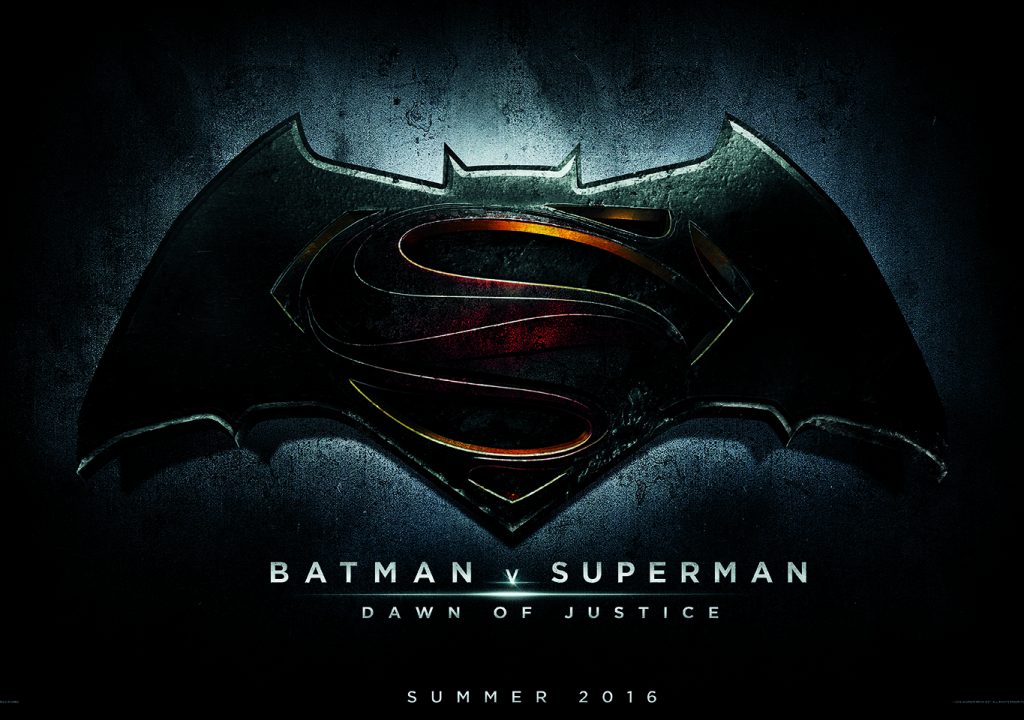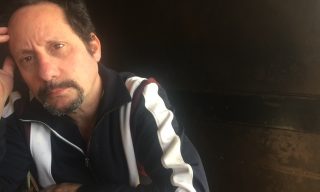 David Brenner has 23 credits as an editor going back to the 1980s with “Talk Radio,” “Born on the Fourth of July” and “The Doors.” “Born on the Fourth of July” won Brenner an Oscar for Outstanding Editing in 1990, with co-editor, Joe Hutshing. His credits also include such notable blockbusters as “Independence Day,” “The Patriot,” “Pirates of the Carribean: On Stranger Tides,” “Man of Steel,” “300: Rise of an Empire” and, most recently, “Batman v Superman: Dawn of Justice.”
David Brenner has 23 credits as an editor going back to the 1980s with “Talk Radio,” “Born on the Fourth of July” and “The Doors.” “Born on the Fourth of July” won Brenner an Oscar for Outstanding Editing in 1990, with co-editor, Joe Hutshing. His credits also include such notable blockbusters as “Independence Day,” “The Patriot,” “Pirates of the Carribean: On Stranger Tides,” “Man of Steel,” “300: Rise of an Empire” and, most recently, “Batman v Superman: Dawn of Justice.”
HULLFISH: You’ve done a lot of blockbusters, is there a difference these gigantic features and the smaller movies that you’ve cut?
BRENNER: In a way there is and in a way there’s not. The gigantic features may have elaborate action scenes involving a lot of footage and a lot of CG, which brings a host of editorial challenges. They frequently also have complex storylines with many interweaving characters, which the editor has to track, massage, make flow and climax. This is exactly what the editor must do with many smaller films. Just before “Batman versus Superman” I did this medium budget film called “Paradise Lost” about Pablo Escobar. I think that was around $20M. Just as with “BVS”, (“Batman v Superman”), it had a long build where we had to track different characters. As always there was too much originally shot, so there were a lot of choices to make to get the film to play. So no matter what the budget or scale, as the editor, you’re just trying to get the story and characters to work. Whether or not it’s a $200M action film or a $20M art house film, you’re still trying to get the movie to play.
HULLFISH: A $20M art house film, huh?
BRENNER: Did I say that? I didn’t say that! (laughs). I once worked on a $90M art house film, “What Dreams May Come” (1998, Robin Williams, Cuba Gooding, Jr.). That’s what the studio, Polygram Entertainment called it at the time. The studio went out of business after that. Not that the movie caused it; they were teetering on the edge of bankruptcy and after the movie was completed, they fell. By the way, I love ‘What Dreams May Come.” Robin Williams was so talented, so hard-working and committed, and such a sweet sweet funny man. It’s a beautiful and daring film. When I first met my wife she told me she loved it and so we had something to talk about on our first day. I think I acted super important. It’s embarrassing to me now.
HULLFISH: You were talking about scripts and I know I wish I had the pull to speak into the script phase a little more… Editors do have a feel for the story issues that others might not see or feel at that stage, I think. Issues I see in the script before shooting are always the same issues I have to deal with in post. Do you get any chance to speak into that? Maybe not on this film, but on other ones?
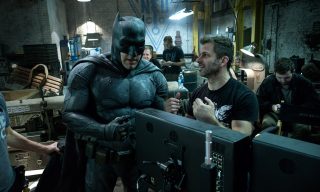 BRENNER: Sometimes I do and sometimes I don’t. On many movies of this scale there are so many people that are weighing on the script, so many adjustments that a director may have to do just do get the script greenlit… I tend to speak up only if there’s something I feel super strongly about, or if I think there’s an extra piece to shoot that could help the build of the story. I try not to be a pain in the ass until we actually start editing. Most of the questions that I have are usually things that I know we can address then. Reduce things, move things around. Zack knew that on “Man of Steel” we addressed a lot of script questions in the film editing. So he was confident we could do it again.
BRENNER: Sometimes I do and sometimes I don’t. On many movies of this scale there are so many people that are weighing on the script, so many adjustments that a director may have to do just do get the script greenlit… I tend to speak up only if there’s something I feel super strongly about, or if I think there’s an extra piece to shoot that could help the build of the story. I try not to be a pain in the ass until we actually start editing. Most of the questions that I have are usually things that I know we can address then. Reduce things, move things around. Zack knew that on “Man of Steel” we addressed a lot of script questions in the film editing. So he was confident we could do it again.
HULLFISH: What’s your approach to dailies?
BRENNER: On “Man of Steel” we had dailies sessions every lunch. But as we got deep into the shoot, Zack got so busy that he ended up watching them on his own time. The same thing happened on “BvS”. He watched a lot of dailies (and cuts as well) on his iPad. But he always watched everything. As far as organizing dailies on the avid… What I do is have the assistants put the dailies into bins, if they’re multi-camera, they group-clip them for me, but I only use grouping later when I’m recutting. One of the first things I have to do for the Snyders is make studio selects, which is basically one shot of every angle, just to put on PIX so the studio can watch them. So I’ll watch everything once through, without making notes, and choose these selects. It’s a good sort of first viewing for me, so I understand everything I have, before I start making my selects. So now, I’ll look at every take and I’ll pull select pieces, which may cover three or four lines of dialogue or an action from point A to point B. I’ll keep repeating these moments from other good takes, edging forward in time until I’ve covered the whole scene. Maybe the selects might be half an hour if it’s a three minute scene. It’s those selects that I’ll use when I do my first cut. This is a process that goes back to when I cut my first movies with Oliver Stone and he was nervous about jumping into an edit, so he wanted to slowly refine with selects first. Later, when I want to look for extensions or I want to start to question things, I might go back to the dailies, or I might look at the selects if I’ve done a good job of ordering the moments.
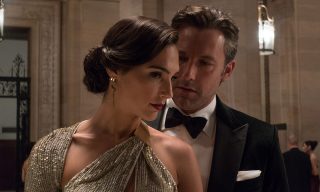 HULLFISH: About half of the editors I’ve talked to like to create selects reels…maybe a bit more than half. Everybody’s got their process. One of the things that struck me about this story – and many stories – but this one in particular – was the intercutting of stories back and forth between one place and another or one person’s perspective and another. Was that something that you had to tweak a lot from what was delivered with the script? Or in creating the story you found you needed to either break those up more or consolidate them more from the way they were in the script?
HULLFISH: About half of the editors I’ve talked to like to create selects reels…maybe a bit more than half. Everybody’s got their process. One of the things that struck me about this story – and many stories – but this one in particular – was the intercutting of stories back and forth between one place and another or one person’s perspective and another. Was that something that you had to tweak a lot from what was delivered with the script? Or in creating the story you found you needed to either break those up more or consolidate them more from the way they were in the script?
BRENNER: In the script there were more story lines than you see in the movie today. That was probably our biggest editorial issue in trying to get the cut down to a reasonable length. For us, the trickiest section was the beginning of the film, until the point where Bruce Wayne tells Alfred the truth about what is on the “White Portugese” ship… the truth about his plan. This moment set into motion everything until the end of the film really. Until that point the movie was always tracking many solo paths, some intersecting, some not. Finally in this scene, the paths fork into one road. In the script there are more subplots than you see in the movie right now. Also in terms of building this beginning we had to move things around. In the script, Lex was introduced much later, but we found that in watching the movie – because he’s such an important player, it was best to set him up sooner. Plus, his presence has so much energy, a twisted comic energy that boosted the film. Generally, BvS was a unique challenge in that we had not one but two protagonists, each with an alter-ego. So there was Clark Kent, Superman, Bruce Wayne and Batman. And then surrounding them are Lois Lane, Lex Luthor, Wallace Keefe (the guy who loses his legs when Wayne Tower falls), Perry White, Martha Kent, Holly Hunter’s character (Senator Finch), and still more characters orbiting them.
HULLFISH: That’s a LOT to juggle.
BRENNER: It was a lot to juggle. So the plot lines of a couple characters had to go. These people are currently in the movie but we don’t track them, and it’s okay. What’s kind of fun is that we went back and did an extended cut where we put a lot of this stuff back, and we refined it into the same rhythm as the theatrical release. So what was once a nearly four hour cut with absolutely everything was ridiculous – ended up being about a three hour cut, once all these added storylines were refined with the fat was cut out.
HULLFISH: Wow. Four hours.
BRENNER: . I remember being a little worried. Three and a half hours, okay, that’s fine for a movie of this size, the way Zack likes to work. This was more daunting. But we cut down “Man of Steel” from about 3 and half hours, I knew we’d get this done.
HULLFISH: I sometimes feel like I know early on that it’s going to go too long and I want to start trimming right then and there, but many have warned against trimming in the preliminary stage. But I want to cut fat as soon as I see it.
BRENNER: Me too.
HULLFISH: But you didn’t?… or did you?
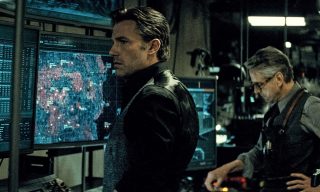 BRENNER: I did. During the shoot, we review the scenes a few times. I do the first cut, then I’ll put it away and look at it the next day, when I’m fresh and not obsessing about making the cuts. I’ll change some things. Maybe I’ll change a lot of things. Then I’ll smooth the dialog, and hand it over to Warren Paeff, my assistant, to start building sound effects and backgrounds. This is a big deal on these action films which sometimes have little usable production track… and then, usually, I’ll temp music on it, to make if feel like a movie, and then I’ll show it to Zack the first time. Now sometimes he’ll pop in and see things in a rougher state… just so he feels good that he has everything. And then I’ll refine it, add music maybe and send it to him again. He may see it two other times during the shoot – or maybe three – and during those times I always end up whittling it down a little bit. But yes… the movie we were making was not a short one.
BRENNER: I did. During the shoot, we review the scenes a few times. I do the first cut, then I’ll put it away and look at it the next day, when I’m fresh and not obsessing about making the cuts. I’ll change some things. Maybe I’ll change a lot of things. Then I’ll smooth the dialog, and hand it over to Warren Paeff, my assistant, to start building sound effects and backgrounds. This is a big deal on these action films which sometimes have little usable production track… and then, usually, I’ll temp music on it, to make if feel like a movie, and then I’ll show it to Zack the first time. Now sometimes he’ll pop in and see things in a rougher state… just so he feels good that he has everything. And then I’ll refine it, add music maybe and send it to him again. He may see it two other times during the shoot – or maybe three – and during those times I always end up whittling it down a little bit. But yes… the movie we were making was not a short one.
HULLFISH: In the ACE Oscar Panel discussion “Invisible Art/Visible Artists” Alan Heim was asking what the deal was with all of these long movies. He kind of posited that movies should be 90 minutes. Then all of the nominees basically had to defend themselves about why their specific movie NEEDED to be three hours.
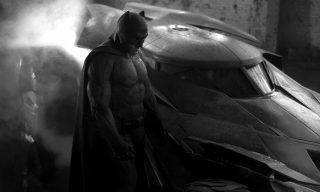 BRENNER: I’m glad “All that Jazz” wasn’t 90 minutes, and that was a legendary editing by Alan. I’m glad “Lawrence of Arabia”, or “Dances with Wolves…” weren’t 90 minutes. I think the right length depends on the story. And at the same time, it’s very important to get the movie as tight as it can be. I like to keep cutting until you get to a version where you and the director feel it’s too tight. Where you feel “That was too fast, that was too short, this is hard to follow, this isn’t landing. “ It’s good to get to this point because you know you’ve crossed the limit. Now you isolate these over-tight moments and put some air back into them. The point is, it’s easy to put things back. No one’s going to see any splices. So make a bold pass. In 20 cuts, 5 changes may be too fast but 15 changes are awesome. So you’re ahead of the game.
BRENNER: I’m glad “All that Jazz” wasn’t 90 minutes, and that was a legendary editing by Alan. I’m glad “Lawrence of Arabia”, or “Dances with Wolves…” weren’t 90 minutes. I think the right length depends on the story. And at the same time, it’s very important to get the movie as tight as it can be. I like to keep cutting until you get to a version where you and the director feel it’s too tight. Where you feel “That was too fast, that was too short, this is hard to follow, this isn’t landing. “ It’s good to get to this point because you know you’ve crossed the limit. Now you isolate these over-tight moments and put some air back into them. The point is, it’s easy to put things back. No one’s going to see any splices. So make a bold pass. In 20 cuts, 5 changes may be too fast but 15 changes are awesome. So you’re ahead of the game.
HULLFISH: On “War Room” the first cut was 2:30. We went into theaters right around 2:00, but I DID do a cut that was 1:42 that the director hated. It had ALL of the fat cut… and a bit too much of the heart went with it. … You mentioned that your assistant does some sound stuff for you and temp music. Let’s explore both of those a little more. How important – especially on a movie like this – is getting some really good temp sound design done to sell the visuals?
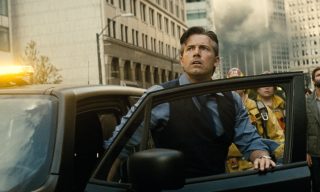 BRENNER: I think it’s super-important. If you start to get into sound design early on, it becomes part of the cut. You build up moments and transitions with sound as a key player. For instance, in BvS there’s the moment in the beginning of the film where Wayne Tower falls down. Bruce Wayne runs into the cloud of dust which fills the screen and then we dissolve to another completely white frame, which is a time cut, dust again starts to dissipate, and then we reveal Bruce walking in a daze. A riderless horse walks by, eerie, followed by a few dazed survivors. Sonically, we found a musical crescendo that climaxes when the cloud of dust hits Bruce, accompanied by a very round and boomy impact, which rings out…. leaving nothing at all save a high-pitched, tinnitis sound. Everything else is a vacuum. Then, we slowly brought back some elements: the sound of the horse’s breath, its hooves. Then I found an eerie Tibetan Horn, actually a human thigh bone being blown, that is heard in the distance, only with a little growing wind. And then as the camera gets closer to Bruce, we slowly bring back reality sounds, creaks and groans, and finally the production track of someone shouting “Mr. Wayne! Mr. Wayne!”, which turns out to be Wallace Keefe trapped beneath the rubble. This motivates Bruce to react, and as he leaves the frame, the energy picks up with reality sounds and music with tension and pulsing rhythm. So this shape, which involves picture, sound design, and music, began with our first cut and remains in final cut pretty much the same way.
BRENNER: I think it’s super-important. If you start to get into sound design early on, it becomes part of the cut. You build up moments and transitions with sound as a key player. For instance, in BvS there’s the moment in the beginning of the film where Wayne Tower falls down. Bruce Wayne runs into the cloud of dust which fills the screen and then we dissolve to another completely white frame, which is a time cut, dust again starts to dissipate, and then we reveal Bruce walking in a daze. A riderless horse walks by, eerie, followed by a few dazed survivors. Sonically, we found a musical crescendo that climaxes when the cloud of dust hits Bruce, accompanied by a very round and boomy impact, which rings out…. leaving nothing at all save a high-pitched, tinnitis sound. Everything else is a vacuum. Then, we slowly brought back some elements: the sound of the horse’s breath, its hooves. Then I found an eerie Tibetan Horn, actually a human thigh bone being blown, that is heard in the distance, only with a little growing wind. And then as the camera gets closer to Bruce, we slowly bring back reality sounds, creaks and groans, and finally the production track of someone shouting “Mr. Wayne! Mr. Wayne!”, which turns out to be Wallace Keefe trapped beneath the rubble. This motivates Bruce to react, and as he leaves the frame, the energy picks up with reality sounds and music with tension and pulsing rhythm. So this shape, which involves picture, sound design, and music, began with our first cut and remains in final cut pretty much the same way.
Another good reason to consider sound design and music early on has to with extended action scenes. As you get deep into the last act of a long film like this, you have to do everything you can do avoid bombarding the audience and shutting them down before the film’s over. A good trick is to pick a point late in the 3rd act to let the sound effects play underneath strong melodic score. The sequence will seem different now, fresh. Hans Zimmer really went for this in the 3rd act, saving the big action melodies as long as he could. We created a montagey action beat late into the sequence, where Superman and Wonder Woman are fighting Doomsday. The style of this lent to a mix where hard sound effects went into the background, with reverb, as well as the war cries of Wonder Woman. Actually this action beat was reconceived by Zack late in the game, so that the camera was more with our heroes than in the original previs.
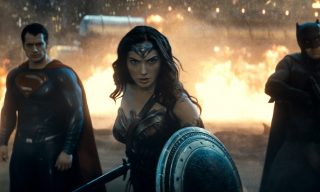 HULLFISH: You had said that you hand stuff off to your assistant, but that sounds like you were very hands-on with that audio. So how are you either collaborating or directing an assistant or the sound department?
HULLFISH: You had said that you hand stuff off to your assistant, but that sounds like you were very hands-on with that audio. So how are you either collaborating or directing an assistant or the sound department?
BRENNER: Warren and I have been working together for a long time, so we have a shorthand. He has a good idea of what I’d put on a scene the first time. But before sound effects, you need a strong production backbone. I was taught early on by both my mentors Claire Simpson and Paul Hirsch that a well-cut work track is crucial. (Paul said “If you cut the sound right, the picture will follow.”) So I really work the production tracks myself, finding gems in alternate takes, smoothing cuts and levelling things out. Only then do I give the cut to Warren to start pulling and cutting sound fx. When he does this, I start trying different temp music I’ve pulled. When I’m done, if Warren is still working on sound (on a big sequence this can easily take a week), I’ll start working on the dailies of other scenes, pull selects and make a first cut. I’ll take a scene I first-cut the night before, and do a 2nd pass and dialog track pass of that scene. It’s a little like an assembly line. I usually have 3 or 4 scenes I’m working on at once, at different stages of polish. Oh, add to this that Zack may call or walk in at any minute and wonder how things are looking. I’ll usually just show him whatever, at whatever stage, he doesn’t mind if there’s no sound at first. Then I’ll show him a more polished version in a few days.
HULLFISH: What about temp music? Since this is Hans Zimmer, did you temp with his music?
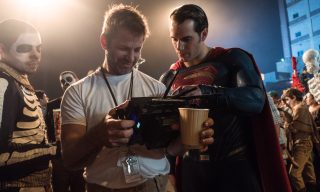 BRENNER: I used of course some of “Man of Steel” for Superman, for Clark and Lois, and for some action. For Batman I listened to a lot of scores and ended up using mostly the awesome “Enders Game” soundtrack. Also “Elysium” for both action and elegiac moments – what a beautiful score. For Lex, I found the score for “The Double” which was perfect, simple bold twisted slow piano notes that then grew with psycho strings. You know what I do a lot, is I go through the script before shooting, and think about temp music. I do this because later, I’m so swamped that the last thing I want to do is start looking through soundtracks. I made bins for each character so that we had a Lex music bin where I put different music ideas for Lex. I made a Superman bin, a Batman bin, a fast action bin, a broad action bin, a tension bin, a love theme bin, etc. I know that the temp music I put on the movie is going to be thrown away, unless I find a source cue that ends up sticking (like Chris Cornell’s “Seasons” in “Man of Steel.”) But with score, I’m just going for tempo and tone.
BRENNER: I used of course some of “Man of Steel” for Superman, for Clark and Lois, and for some action. For Batman I listened to a lot of scores and ended up using mostly the awesome “Enders Game” soundtrack. Also “Elysium” for both action and elegiac moments – what a beautiful score. For Lex, I found the score for “The Double” which was perfect, simple bold twisted slow piano notes that then grew with psycho strings. You know what I do a lot, is I go through the script before shooting, and think about temp music. I do this because later, I’m so swamped that the last thing I want to do is start looking through soundtracks. I made bins for each character so that we had a Lex music bin where I put different music ideas for Lex. I made a Superman bin, a Batman bin, a fast action bin, a broad action bin, a tension bin, a love theme bin, etc. I know that the temp music I put on the movie is going to be thrown away, unless I find a source cue that ends up sticking (like Chris Cornell’s “Seasons” in “Man of Steel.”) But with score, I’m just going for tempo and tone.
HULLFISH: There’s a bunch of guys I’ve talked to that don’t temp with anything. A completely clean, score-less first editor’s cut.
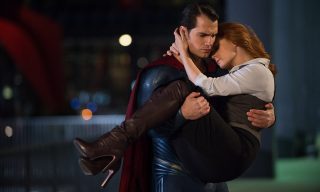 BRENNER: Some directors like that for sure. And I get the purity of that, and I get the idea that a well-cut scene doesn’t need music to help it out. I just like the play between music and picture. I like in a fight scene, finding a tempo that works so kicks and punches are musical. This doesn’t always work out but sometimes a series of “hits” are fun. Generally, what Zack and I do is this: I start with temp music, which helps him the first time he sees it, and definitely helps the producers feel like a movie is being made. It helps us find the pace of montages. But later, when we’re cutting it down, we turn the music off. This is a trick we learned from Chris Nolan. On “Man of Steel” he said, “You guys should turn the music off because you are stuck to its rhythms and it’s tricking you into thinking that everything has to be this length. It’s making you think everything is perfect. Shut it off.” Sure enough, when we turned it off there was all kinds of stuff that felt long. We took out so much fat this way. Later I healed the music or our brilliant music editor Melissa Muik healed it or found something altogether different and better.
BRENNER: Some directors like that for sure. And I get the purity of that, and I get the idea that a well-cut scene doesn’t need music to help it out. I just like the play between music and picture. I like in a fight scene, finding a tempo that works so kicks and punches are musical. This doesn’t always work out but sometimes a series of “hits” are fun. Generally, what Zack and I do is this: I start with temp music, which helps him the first time he sees it, and definitely helps the producers feel like a movie is being made. It helps us find the pace of montages. But later, when we’re cutting it down, we turn the music off. This is a trick we learned from Chris Nolan. On “Man of Steel” he said, “You guys should turn the music off because you are stuck to its rhythms and it’s tricking you into thinking that everything has to be this length. It’s making you think everything is perfect. Shut it off.” Sure enough, when we turned it off there was all kinds of stuff that felt long. We took out so much fat this way. Later I healed the music or our brilliant music editor Melissa Muik healed it or found something altogether different and better.
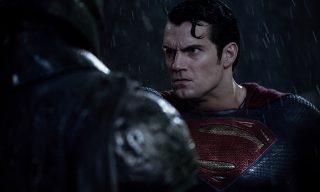 HULLFISH: That’s great advice. Now I want to get back to the idea of intercutting the storylines. You mentioned that you had to eliminate a bunch of storylines. But there’s also that decision of how much intercutting that you do and how much consolidation of those storylines you do, so they’re not so cutty… you need to stay with them long enough to get invested in that part of the story. How much of that stuff was scripted?
HULLFISH: That’s great advice. Now I want to get back to the idea of intercutting the storylines. You mentioned that you had to eliminate a bunch of storylines. But there’s also that decision of how much intercutting that you do and how much consolidation of those storylines you do, so they’re not so cutty… you need to stay with them long enough to get invested in that part of the story. How much of that stuff was scripted?
BRENNER: It’s funny. It’s frequently the case that in scripts, storylines are more intercut because it makes scripts feel exciting and dynamic. But so often when you put the scenes together, you want to stick with a given character’s stories longer and intercut a little less. I can’t tell you how often this is the case. Actually I think you have put your finger on the biggest task problem we face when we’re trying to deal with complex films with multiple story lines. That’s exactly the dance. For me I’ve always gone back to something that Roland Emmerich put his finger on: “Let’s think in terms of cause and effect.” Stick with characters and their storylines and when it’s time to cut, try to find cause and effect transitions so that you feel like there’s a reason that you’re cutting to then next thing. Find a cause and effect. Or ask a question as you end a scene, and then answer it in the next. That’s not always possible but it’s great to find these connections. Or find some element in common with scene A and scene B, and use that to cut. When I cut “Night and the City”, in trying to trim two contiguous scenes, I found a moment where Robert De Niro looked at his watch in both scenes, so I match cut that action over the two scenes. And lost a ton of time. It was a cool cut and a good way to time cut – he’s still waiting. So anyway, when we intercut and when we stick with the story is one of our biggest problems. You realize that if you stick with one story line for too long, it’s going to be boring and lumpy. If you intercut too much it’s going to be confusing and aimless and that’s exactly the dance we have to do.
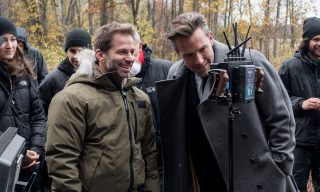 HULLFISH: That sounds very similar to another great piece of advice from one of these interviews which was “Never cut AWAY from something. Cut TO something.” You’re deciding “Here’s a place where I have a REASON to go to something else instead of leaving a scene because I’m just done.
HULLFISH: That sounds very similar to another great piece of advice from one of these interviews which was “Never cut AWAY from something. Cut TO something.” You’re deciding “Here’s a place where I have a REASON to go to something else instead of leaving a scene because I’m just done.
BRENNER: That’s a really good way to put it.
HULLFISH: Tell me a little bit about your collaboration with Zack.
BRENNER: He’s a super visual guy. He was a painter before he was a director, and more than anyone I’ve ever worked with he thinks in terms of pictures. He storyboards his movies himself. The whole movie from start to finish, he draws. He keeps books. “BvS” had maybe three books of his drawings. As for action scenes, scripts are usually not a great bible for how the action is going to be blocked. So before I cut an action scene, I’ll look at his storyboards.. and of course at the previs, which was borne from his storyboards. Or if I have questions about dailies that veer from the script, and I can’t reach him because he’s on set.. I may look at the boards for answers. As far as general conversations about editing…. neither Zack or I are particularly theoretical. We’re kind of more doers… if it feels right.. that’s usually the answer. But early on in “Man of Steel”, we did talk a lot because we didn’t know each other. I wanted to understand what he liked from an editor and he wanted to feel good about where my head was at. Don’t get me wrong, we do discuss scenes, themes, arcs, etc. But we don’t overdo it.
Right now he’s so busy in London prepping “Justice League”, I’m the last guy he has time to talk to. I have questions, so I’ll wait till I go to London at the end of the week and I’ll figure it out. I think the more the work with somebody the more you understand that there’s a shorthand and it’s all going to be answered and there’s less anxiety about it.
HULLFISH: So you’re off to London at the end of this week?
BRENNER: Yeah.
HULLFISH: Let’s talk about some of the scenes that I have the access to. This one is called “You took something that doesn’t belong to you.”
BRENNER: So this is later, days after she’s stolen his wire-tapping device. The opening shot was constructed with a much longer introduction. A oner (one long, extended, heavily choreographed shot with no cutaways), starting close on a tray of champagne glasses, we follow a waiter out with the tray into a museum gala… an art curator takes a glass off the tray and we follow him as he interrupts Diana Prince from a conversation, and walks her through the party giving her an elaborate introduction to the Sword of Alexander… and finally we come to the sword. This beautifully timed shot was one of the first things we had to cut because, as I said we were well over 3 hours and I guess the shot itself had little to do with story….. So now, we come in on the curator saying “it’s the Sword of Alexander” and in a few steps we see the sword. Shot 2 is a reverse, Diana takes in the sword and Bruce enters into a 2 shot. No coverage here… so the task here is just to choose the best take. She comments on the fact that the sword is a fake, turns away and then we cut to shot 3. That’s a long Steadicam shot that takes them from the sword case to the floor. It starts medium wide on them and then naturally gets closer as they move forward. It’s the only coverage until just before they stop and Bruce turns to face her. So again, that was about choosing the best take. From that point on, that master shot becomes a single of Diana, and Bruce is in a reverse CU. They talk about Lex. Then Diana moves to leave him but he catches her arm and swings around… so her angle becomes a very close 2 shot where he whispers to her. Can’t cut away from this. Finally she breaks off, faces him, and then the scene finishes with 2 reverse close ups. Generally, it’s a scene with not many cuts, that starts with scale focuses down to a very intimate point, and then settles in to something still close, but with a little more air.
HULLFISH: “How many good guys are left” with Alfred and Bruce.
BRENNER: There was a lot of material for that scene, I remember. Ben did it very well from a lot of different angles. But the best delivery of the main final speech (from “That son-of-a-bitch brought the war to us…” until “How many good guys are left”) was in a tight medium close-up over Alfred… not the tightest shot on Ben. We had to use that. However, dramatically, and for the best performance we needed to be closer before that, when Ben talks about the real meaning of the rock and why he intends to steal it. So we were ending the scene not as tight as we began. What helped make this size change, without feeling a loss of intensity, was using this dolly move into Alfred, when he steps forward and says “You’re gonna go to war?” This camera shift helped the size change on Bruce’s side, so the change didn’t bump.
HULLFISH: “Don’t believe everything you hear.” This is the big confrontation between our two protagonist alter-egos that is kind of a pissing match.
BRENNER: The architecture of that scene is simply building into close-ups. We You start with a wide moving shot that follows Bruce as he enters from the stairway and then gets stopped by Clark, who asks him a question. It’s a wider shot where you see Diana in the background and you see Bruce is watching her. So although there was closer coverage at this point, we had to stay wide. But that’s okay, because you want to build into close ups….
HULLFISH: That’s totally my thought.
BRENNER: Yeah. Even sonically we wanted to build in the same way… focus closer on their conversation. So at first we hear the source music and the walla of the party and then, when we’re getting closer visually and the conversation gets more intense, we took those background sounds and reverbed them out and focused in on the dialogue. The reverb we chose gave the background an eerie uneasiness. What’s interesting is that some of the close-ups had a bit more variation in sizes for Bruce, so they felt like they could build into the close-up. But for Clark there was really only a med wide shot and a super-close one, so we ended up resizing – pushing in and making a medium version of that so we could build him up a little bit.
HULLFISH: I just kind of scrubbed through the scene and it’s easy to see that way that the close-ups build up to Bruce. You don’t quite get the same thing happening on Clark. The next scene is called “Day versus Knight” and it’s essentially a monologue of Lex before he sends Superman off to fight Batman, but it’s cut almost like a dialogue scene.
BRENNER: One of the things I really wanted to find with Lex were moments where I could go from a wide shot into a closer shot of Lex. Punch-in cuts can have a strong emotional effect because they are unexpected (we expect to keep cutting back and forth with reverses), and the place where punch in has to be the right place physically (it’s best on a strong movement) and in the best scenario, the right place emotionally. So in this scene, where he is talking about his father, we punch in close when he says “my father’s fists and abomination.”… which underscored what was wrong with Lex. It also coincided with with Jesse Eisenberg making a sudden fist in the air and with him emphasizing these words. So it worked in many ways.
As far as cutting away from the listener, well we had to involve Superman to see him affected by Lex’s words, to build his anger… and in a few places we had to trim some of the pauses in the monologue.
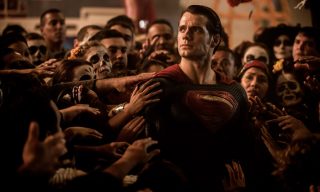 HULLFISH: I didn’t know Zack was a painter. “Man of Steel” and “Batman v Superman” both have very interesting color palettes. It’s something that is starting to make a lot of sense to me, knowing he was a painter. Was he concerned with the color grading even at the dailies stage or while he was in off-line? Or does he overlook that, knowing what he’ll be able to do in a real color suite with a real colorist?
HULLFISH: I didn’t know Zack was a painter. “Man of Steel” and “Batman v Superman” both have very interesting color palettes. It’s something that is starting to make a lot of sense to me, knowing he was a painter. Was he concerned with the color grading even at the dailies stage or while he was in off-line? Or does he overlook that, knowing what he’ll be able to do in a real color suite with a real colorist?
BRENNER: He’s so into that phase of post-production, he’s brilliant there. And as important is the final color, surprisingly he’s rarely bothered by color bumps in early cuts on the Avid, the way some directors are. He knows what he’s looking at is temporary. Our post sup, Andrea Wertheim, gives him time at the D.I. suite at Company 3. There he works with his colorist, Stephen Sonnenfeld, with whom he’s worked for years. And before he shows his Director’s Cut to anyone, he and Stefan do a pass where he starts to define looks, tie things together, and experiments with his palette. Now, early on, he has to deal with many low res temps and even HD Quicktimes that come from our avid comps. Later on, when everything’s hi res, it’s obviously easier for him. He’ll have another temp DI session for the first Friends and Family screening, and then there’s the final. Over these sessions he develops the look of his film. And when you compare the final DI with the dailies, it’s just completely night and day. This is one of the many areas he shines.
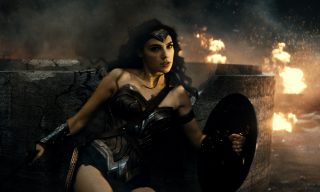 HULLFISH: Really! Interesting. Color grading is a big interest of mine, so I love hearing that kind of detail. Two final questions if you have the time: Talk about cutting with SO much VFX. What are the challenges? So much would have to be based on imagination, I’d think. Editing is so based on the motion within a frame and you’re lacking so much of that.
HULLFISH: Really! Interesting. Color grading is a big interest of mine, so I love hearing that kind of detail. Two final questions if you have the time: Talk about cutting with SO much VFX. What are the challenges? So much would have to be based on imagination, I’d think. Editing is so based on the motion within a frame and you’re lacking so much of that.
BRENNER: With every movie I work, previs is getting better and better. DJ Desjardins, Zack’s longtime VFX Designer, works with the previs artists, having analyzed Zack’s storyboards, maybe the stunt vis, and having many discussions with Zack. Then Zack will come in and give the artists notes with DJ. Often Then, often I’ll have a look at it, make some editorial suggestions, and finally they’ll shoot the scene. Now sometimes, during shooting, something may change for practical reasons, and I find they have veered from the previs. Then I have to adjust how I cut the sequence. So once I cut the sequence, I cut it in the best way I can. I use the dailies, and keep the previs on a hidden track. The order may veer from the previs. We can always go back and compare. I’ll only use the previs on an upper track if it’s an all CG shot. And if previs doesn’t exist for an all CG shot, I may digitize the storyboards, and cut that in, or even make a black title card. Then the post vis team will make something for us to work with.
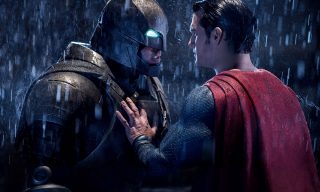 HULLFISH: Last question about fight scenes, which this movie had a lot of. As an editor, you can’t help but kind of notice stuff that you maybe shouldn’t be noticing as a movie goer, and I loved some of the use of little moments of motion: the swing of a camera or something that you would look at as a non-editor and not even see as a useful moment of film, but it added a kinetic quality to the fight that helped propel it. Talk to me about finding those little moments. You’re clearly looking for those little kinetic moments as you’re pulling selects and building the scene.
HULLFISH: Last question about fight scenes, which this movie had a lot of. As an editor, you can’t help but kind of notice stuff that you maybe shouldn’t be noticing as a movie goer, and I loved some of the use of little moments of motion: the swing of a camera or something that you would look at as a non-editor and not even see as a useful moment of film, but it added a kinetic quality to the fight that helped propel it. Talk to me about finding those little moments. You’re clearly looking for those little kinetic moments as you’re pulling selects and building the scene.
BRENNER: Sure. I love those moments, those dynamic details. A lot of the times the way Zack designs action is really specific, very choreographed. I mentioned stunt viz. Zack works with his stunt co-ordinator, Damon Caro, creating and choreographing the scenes with stunt players in warehouse sets using GoPros and the like. It becomes the bible for the real shoot with the actors, camera crew, etc. Those specific camera moves usually are created then, though sometimes I’ve seen camera moves in the dailies that came out of the stunt viz. But yes, I’ll always try to find close, dynamic movement as a way to get into cuts.
HULLFISH: But you also have to worry about the geography of the fight, right? So the audience doesn’t get lost.
BRENNER: Absolutely, if you stay too close too long then it can become claustrophobic and confusing. So it’s clear and refreshing to cut wide, but when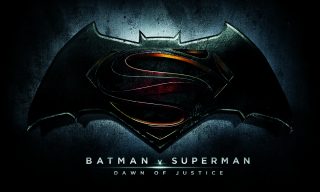 you do, try to go in on strong movement. Otherwise you can suffer a loss of energy, going from a lot movement to no movement is usually jarring.
you do, try to go in on strong movement. Otherwise you can suffer a loss of energy, going from a lot movement to no movement is usually jarring.
HULLFISH: Great advice. Thank you so much for sharing with us.
BRENNER: You’re welcome. Great speaking with you.
For more interviews in the Art of the Cut series, check out THIS LINK and follow me on Twitter @stevehullfish.

Filmtools
Filmmakers go-to destination for pre-production, production & post production equipment!
Shop Now